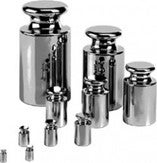Laboratory balances are used to measure the weight of multiple types of media. They can measure both solids and liquids. There are various types for different purposes and measurements. They can get used in many different environments. They are commonly used for clinical use, research, and food production. With many types of balance available, how do you choose the right one? Here we have answered common FAQs to help you find what you need.
Laboratory balances are used to measure the weight of multiple types of media. They can measure both solids and liquids. There are various types for different purposes and measurements. They can get used in many different environments. They are commonly used for clinical use, research, and food production. With many types of balance available, how do you choose the right one? Here we have answered common FAQs to help you find what you need.
How accurate are they (to what decimal place)?


Accuracy refers to the reliability of the sample reading. Correct calibration of the balance will affect the accuracy. If they are calibrated often, readings will have a higher accuracy. Sample placement on the balance can effect this. Samples placed on the centre of the balance are more accurate than those placed near the edge.
Accuracy does at times get confused with readability. Readability refers to how many decimal places the sample reading is given in. The model and type of balance will also influence accuracy and readability.
Do I need to calibrate these balances, and if so how?
Laboratory balances do need calibration. Calibration should take place in the area of intended use to prevent measurement fluctuations caused by gravity changes. Calibration weights can be bought to use to check and assist in calibration. They are sold in a range of weights and sizes for easy accuracy checks.


How often do they need calibrating?
Calibration depends on your preference. There is no set timescale or number of samples before you need to recalibrate. Calibrate the balance when first used, any time they have moved location, and between uses for accurate results. Being calibrated often results in more accurate and reliable readings. https://www.camlab.co.uk/f1-calibration-weights-single-weights can be bought and used (which are made to specific set weights) to help with calibration.
Some balances mention internal calibration, what does this refer to?
Balances with internal calibration have an internal weight. It uses this to then calibrate itself. Weights are not needed to be bought for these as it uses the internal ones. Recalibration when moving locations is not needed with these. This type of balance will account for gravity changes. Certain advanced models can calibrate automatically. This happens at certain time intervals or detected environmental changes such as change in temperature.
I have seen a few various types of balances, what is the difference?
Analytical and semi-micro balances measure with a high degree of accuracy and precision (readability between 0.00001g – 0.0001g). They have a draft shield which makes them useful for fine samples.
Precision balances are similar to analytical balances but have a readability between 0.001g – 0.1g.
There are many other types for other factors. Larger samples would benefit from floor scales. Balances such as bench scales are useful for smaller workspaces. Portable compact balances are preferred if you need to move the balance often. Moisture balances are used to weigh moisture content of a sample.
These are only a few examples of commonly used balances.
How does a moisture balance work?
Moisture balances measure the water weight in a sample. It takes out the moisture from a sample. so you can work out how moist the sample was. The sample is weighed, heated to dry and remove any moisture, then reweighed. The difference in weight would show the moisture mass of the starting sample. These balances remove the moisture content thermo-gravimetrically. The samples are dried through both convection and infrared radiation.
Many foods can be tested by moisture balances, but the balance must be glass free to adhere to HACCP rules in food production areas
Is there anything that cannot be placed in a moisture balance?


Some materials are not suitable as samples for a moisture balance. Sugar burns before the water is removed. Some plastics may have such a small moisture percentage that these balances cannot remove. Higher temperatures would be required.
Some samples and foods may need preparation before being loaded into the balance. Things such as soft cheeses may form a skin when heated. Liquids such as oils may splatter when heated. Buffer materials such as sand could be used. These buffers should also have moisture removed prior to being used. For fluids, glass fibre pads may be used in place of the sand.






